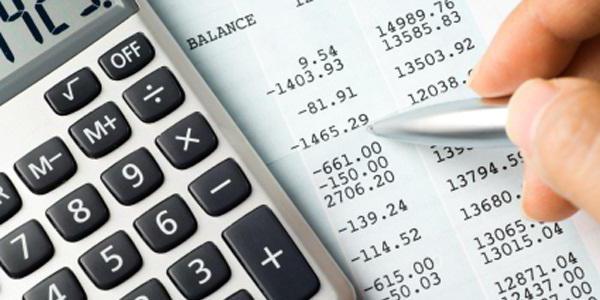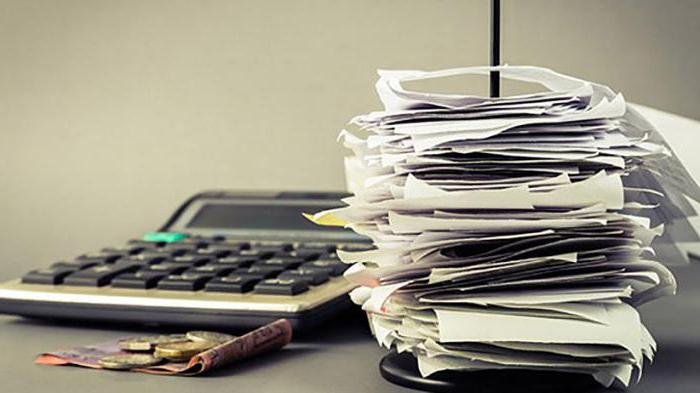Before answering the question of what is not subject to depreciation, we will reveal this accounting term. All funds, whatever they may be, wear out over time. In practice, wear is moral (obsolete method, machine tool, process) and physical (something has broken, ceased to work well, and so on). In accounting, the initial cost of fixed assets, as well as intangible assets, is transferred (not immediately, but in parts) to the value of products manufactured by the organization or company as they deteriorate. This is depreciation, and depreciation (according to accounting terms) is the amount of depreciation of fixed assets, which accrued from the moment they were used. Now let us consider in detail which objects are not subject to depreciation and which are subject to. In other words, which property is depreciable and which is not.
The basic concept of objects subject to depreciation
Depreciable property includes objects that have a useful life of more than twelve months, and their initial value is more than forty thousand rubles.
This property includes:
- Capital investments that were leased out as fixed assets with the appearance of certain improvements that were made with the consent of the lessor by the lessee. They are subject to depreciation in tax accounting.
- Investments made in favor of fixed assets in the form of significant improvements made by the institution that received the loan with the consent of the issuing organization. Intangible assets are depreciated? About it further.
Depreciable property may be the property of a private entrepreneur or an entire organization owned by taxpayers and bringing them profit. By analogy with this definition, the question of what is not subject to depreciation can be answered as follows: taxpayer property that does not generate income. In the relevant documents relating to accounting, this definition is disclosed widely and in detail. In general, we can say that natural resources and land, stocks, construction in progress, goods, financial resources for transactions, and also securities are not subject.
Property related to mobilization capacities is certainly subject to depreciation within the established legal procedure in accordance with Federal Law 206 of November 29, 2012. Depreciation and the following objects:
- property owned by budget organizations;
- property created on budgetary funds;
- property created from targeted cash receipts.
It is important to understand that the depreciable property that a unitary enterprise received from the owner of another unitary enterprise as part of operational management or economic monitoring is certainly subject to depreciation from the aforementioned unitary enterprise within the limits established by law. The property that was received by the investing organization from the owner of the property also falls under the same measures, which is dictated in detail in the legal documents of the Russian Federation on investment agreements related to the scope of activities related to the sale of services in the field of public utilities.
Often asked, and fixed assets are subject to depreciation? Below we will answer this question. 
Items of property, plant and equipment that cannot be amortized
So, the following types of depreciable property are not subject to depreciation:
- valuable objects of budgetary organizations, except for those that were acquired in connection with entrepreneurial labor activity;
- the property of non-profit institutions (NU), which was received in the form of earmarked income, or it was acquired at the expense of the funds of the main income and it is used for non-profit activities.
In addition, the following types of depreciable property are not subject to depreciation:
- items created or purchased using budget money from targeted financing;
- objects for external improvement;
- purchased publications and works of art, the price of publications is taken into account in all other possible expenses that are associated with the sale and production, in the amount of the total cost at the time of purchase;
- property that was created or purchased at the expense of funds that were received free of charge;
- rights obtained for products of intellectual activity, as well as other things of such property in cases where, according to the contract for receipt, payment is made periodically in the form of payments within the contract term.
Fixed assets that are not subject to depreciation are excluded from the composition of the property, since:
- have been received or transferred under the contracts for free use;
- were transferred to conservation equal to a duration of more than three months;
- are under modernization and reconstruction for more than twelve months;
- were registered in the Russian international list of ships at the time of their presence in this database. As part of the re-conservation of items of property, plant and equipment, depreciation for such items may be accrued in the manner that was in effect until the relevant process. In this case, the useful life of the object itself, as a rule, is extended by the period of time it is on conservation.

Details of fixed assets
Under such means, within the framework of taxation, is meant the share of property that is used in the form of labor tools for the creation and sale of goods and services, as well as for managing an institution that has as its initial value an amount of forty thousand rubles. Such objects are not depreciated.
The initial value of the fixed asset is interpreted as the sum of the costs of its receipt. It is considered to be such if a similar item was purchased for free, or was identified as a result of an inventory in the form of the amount to which this property was valued. In this case, we are talking about the construction, delivery, manufacture and bringing to the state in which it is suitable for use, excluding value added tax, as well as excise taxes.
What fixed assets are not subject to depreciation, except for the above?
As part of the revaluation by the taxpayer, that is, the depreciation of the value of fixed assets in relation to the market price, the positive or negative amounts of this action are not recognized as expense or income and cannot be taken to determine the replacement value of the relevant property during depreciation.
The residual value of fixed assets is characterized as the difference between their initial value and the figure that was accrued during the use of depreciation.
Such a value of property, the depreciation of which is calculated by the non-linear method in the event that otherwise is not established by the Tax Code, is calculated according to the following scheme:
S (n) = S x (1 - 0.01 * K) ^ n. In this example, “S (n)” expresses the residual value of the asset upon completion of n months immediately after they are included in the proposed depreciation group. "S" acts as the initial and primary replacement cost of the calculations.
It should be noted that in the framework of calculating the residual value of fixed assets for which the right was used to include in the expenses of the period of spending on capital investments in an amount not exceeding ten percent, we mean no more than thirty percent for the main items. These percentages relate to three to seven sectors for depreciation from the original amount of items. Instead of the figure of the initial indicator, the level of value is applied at which such objects are included in the corresponding subgroups for depreciation.
Considering the equation further, it should be clarified that “n” is the number of months that have passed from the day items were included in the necessary depreciation subgroup until they were excluded from this section, not counting the time expressed by the number of months during which these objects did not belong to composition of property subject to depreciation. “K” is the norm taking into account the increasing or decreasing coefficient, which is applied in relation to the corresponding group. What is not subject to depreciation, we have considered.
The initial value of fixed assets changes under the influence of completion, reconstruction, retrofitting, technical re-equipment, modernization, or partial elimination of the necessary facilities.
The initial amount of property that was received as an object of the concession agreement is calculated as the market value at the time of its acquisition, multiplied by technical re-equipment, the amount of expenses for reconstruction, modernization, completion, retrofitting, or bringing this value to a state where it becomes suitable for application. An exception is the amount of taxes that are deductible, or are included in expenses.
What objects are not subject to depreciation, we found out.
What are intangible assets?
These are the products of intellectual activity acquired or created by taxpayers, as well as other objects of intellectual property that give the owner exclusive rights and are used in creating products, for example, works and services, or for the needs of managing an organization for a sufficiently long period of time, amounting to more than twelve months.
It is important to remember which fixed assets are not depreciated.
An intangible asset is recognized in a number of the following cases:
- the availability of economic benefits in the form of profit;
- correctly executed documents that confirm the presence of an intangible asset and a unique right to it.
Intangible assets mainly include:
- the right of the patent holder to a utility model, in addition, to an invention, or an industrial design that belongs exclusively to him;
- the unique right of the author-developer or other owner to use certain programs for electronic computers, and accordingly databases of all kinds of data;
- copyright or the use of topologies of integrated circuits, which is also exclusive to him;
- the award of a trademark or service mark, as well as the assignment of a unique name to the place of origin of goods and the development of a company name for such;
- the exclusive right of the patent holder to achievements in the field of the selection sector;
Are land plots depreciable? The answer to this question is negative, although the land belongs to fixed assets.
The initial value of depreciable and intangible assets is calculated based on the sum of the costs of their creation or receipt and bringing them to the point where they become suitable for use, the exception is the value added tax and excise taxes.The price of intangible assets that are created by the institution itself is calculated as the sum of actual expenses for their manufacture and creation.
On the terms of use of property subject to depreciation
Depreciable property is distributed among the relevant groups, starting from the terms of its useful use.
So, objects of fixed assets whose value is below 40 thousand rubles or those that begin to bring profit in the future, for example, conserved objects, are not subject to depreciation.
For the purposes of tax accounting, organizations accrue depreciation using linear or non-linear methods. For example, inventories are subject to depreciation and must be calculated.
The taxpayer has the right to include in the structure of tax expenses, or, in other words, the reporting period, expenses on capital investments in an amount not exceeding ten percent of the initial cost of items of funds. The exceptions are those objects that were received free of charge, as well as expenses that were incurred in situations of modernization, completion, reconstruction, retrofitting, as well as technical re-equipment and partial elimination of fixed assets.
Where is the linear method applicable?
The linear method is applicable to structures, buildings and transfer inventions, which are included in depreciation groups in the interval from eighth to tenth. For other fixed assets, taxpayers can use any of the methods. The selected method cannot be changed during the whole time for depreciation. It is important to first understand whether this type of property is subject to depreciation.
It should be noted that in cases where the main asset, in relation to which these rights were used no earlier than after five years from the date of its operation, as well as a person who is dependent on the taxpayer and its amount of expenses, previously included in the composition of the expenditures of the next tax period must certainly be included in the number of unrealized revenues in the reporting period in which such implementation was carried out. This rule applies to the use of fixed assets from the beginning of January 2013 in accordance with 206 federal law.
How is depreciation calculated?
The amount of depreciation is calculated monthly. It is accrued separately for each existing item of property subject to depreciation. Settlement on items of necessary property, including items of fixed assets, the rights to which must be approved in the framework of state registration, begins on the first day of the month that follows the period when the object was put into operation. It does not depend on the actual date of its state registration. The term expires from the beginning of the month that follows the time period in which there was an absolute write-off of the value of the object, or when the object was completely excluded from the category of property subject to depreciation. The accrual itself is made in accordance with existing standards. Everything that is not subject to depreciation for profit tax purposes is excluded.
Linear method
Under this scheme, the total depreciation for one month is calculated as the product of the replacement or, in other words, the initial cost of its norm. Thus, this value is determined by the following formula, namely: K = (1 / n) x 100%. In this case, K plays the role of the norm, the definition in question, and n represents the period of use in months, that is, the period of time during which the tool was useful and actively used.
Nonlinear method
This method takes into account the depreciation amount for thirty days, which is calculated on the basis of the balance sheet of a cumulative nature in relation to the corresponding depreciation subgroup at the beginning of the month and the required norms in this case. The total depreciation calculated over thirty days is calculated using the formula: A = (K / 100) x B. In this example, A refers to the size calculated for one month of depreciation for any group suitable to it. B acts as the total balance. K is the depreciation rate itself calculated for the corresponding classification group.
From the month that follows when the residual value reaches twenty percent of the replacement and initial cost of the object, the depreciation amount is calculated in the following order:
- the residual price of the object is entered as the base value for subsequent calculations;
- The amount of accrued depreciation for thirty days is calculated by dividing the cost by the amount of months that remain until the end of the effective active use period.
Conclusion
Thus, the actual value of fixed assets is reduced due to depreciation. Directly on fixed assets, depreciation is not charged on mothballed open houses, dwellings, dormitories, productive livestock, plantations that have not yet reached the working age, on fixed assets of non-profit organizations, on land, on all objects whose initial cost was below 40,000 rubles. Accountants should be guided to depreciate depreciation standards. As you can see, the statement is false that all types of property are subject to depreciation.